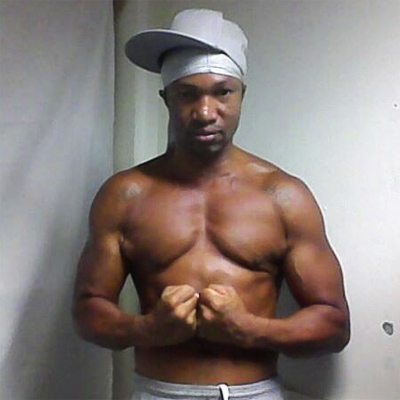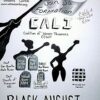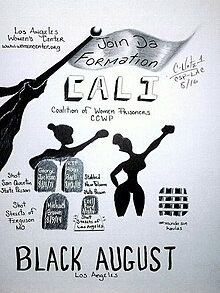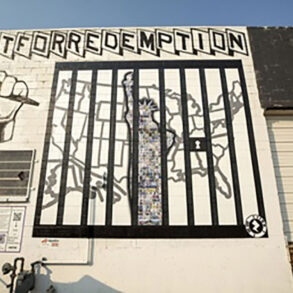
Even the American election season has to reckon with his voice. The roaring voice of a poet, playwright, performing artist, award winning visual artist, and America’s most prolific prisoner artist. Ask Google Search, “Who is the world’s most prolific prisoner-artist?”, and Donald “C-Note” Hooker is ranked #1.
In the sweltering sands of the Mojave Desert, lies Los Angeles’s only prison, and behind those walls lies an artist they call the American Ai Weiwei. A title given when Google Search was asked, “Who is America’s most prolific prisoner-artist?”, and C-Note was ranked #2 behind China’s Ai Weiwei. Ai Weiwei is an internationally recognized, Chinese artist, prisoner, activist, and dissident. Some prisoners had found it very disconcerting to have a foreign national to be named number one on a question about American prisoners. So if the number one ranking was from China, who was his American counterpart? That would be the first American name on the list.
“They started calling me the American Ai Weiwei because these guys sure took pride in knowing someone who was being listed in the same category as Ai Weiwei,” says C-Note.
While C-Note awaits for his works to sell in the six and seven figures that Ai Weiwei’s works have sold for, he has tried to follow in the Chinese artist’s footsteps in other ways. Following Weiwei’s 2014 exhibition on the federal prison on Alcatraz, C-Note was a part of a collective of prisoner artists exhibiting there as well, Art Escape at Alcatraz, May to June of 2017.
To understand what is taking place behind America’s prison walls, is to take notice of its Renaissance, as noted by Emile Deweaver. Deweaver, who has been incarcerated for over 20 years, is the co-founder of the Prison Renaissance. If the 2.3 million American prison population were a city, it would be the fourth largest behind New York, Los Angeles, and Chicago, all known for very vibrant art scenes. Behind the prison wall there is a vibrant art culture, and Hip Hop is playing a vital role.
“Prison culture and Street culture have always played a vital role in Hip Hop,” says C-Note.
“One of Hip Hop’s founding art forms, Graffiti, was started in prison. I call my work Hip Hop because in the early days of Rap, rappers were called news reporters. The American mainstream press did not cover the plight of the inner city, so our stories reached the public through Rap. Photojournalism can show you what it looks like to be locked up, but only the artist can tell you what it feels like to be locked up, and it’s Hell. What mainstream media outlet is reporting these stories? With so many people in our communities locked up, predominantly for quality of life crimes, a real Hip Hop consciousness is right here in prison. So the next time you hear about the death nails of Hip Hop, tell’em nah, ‘Hip Hop ain’t dead; it went to prison. ‘”
This post was originally published on this site be sure to check out more of their content







